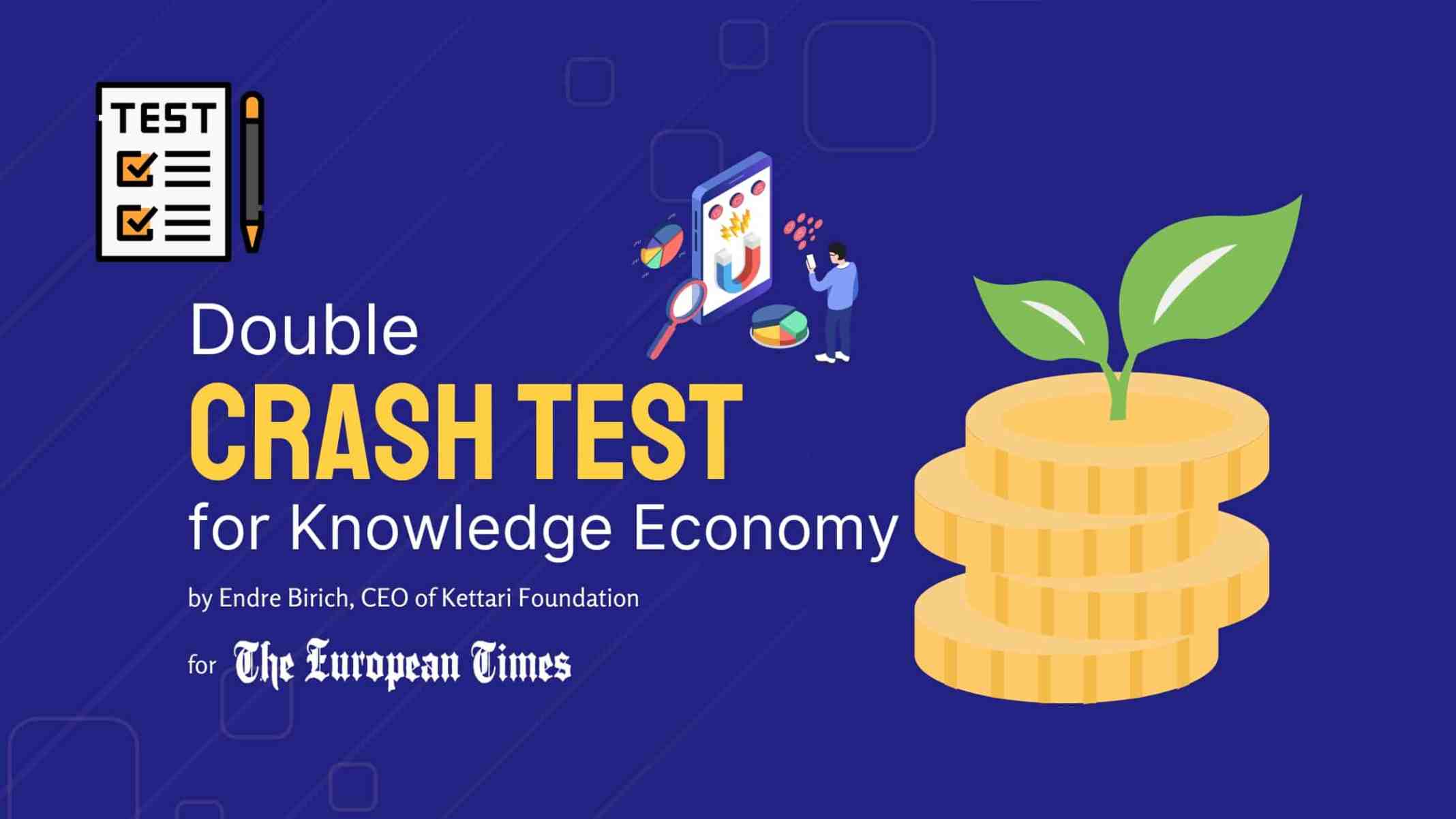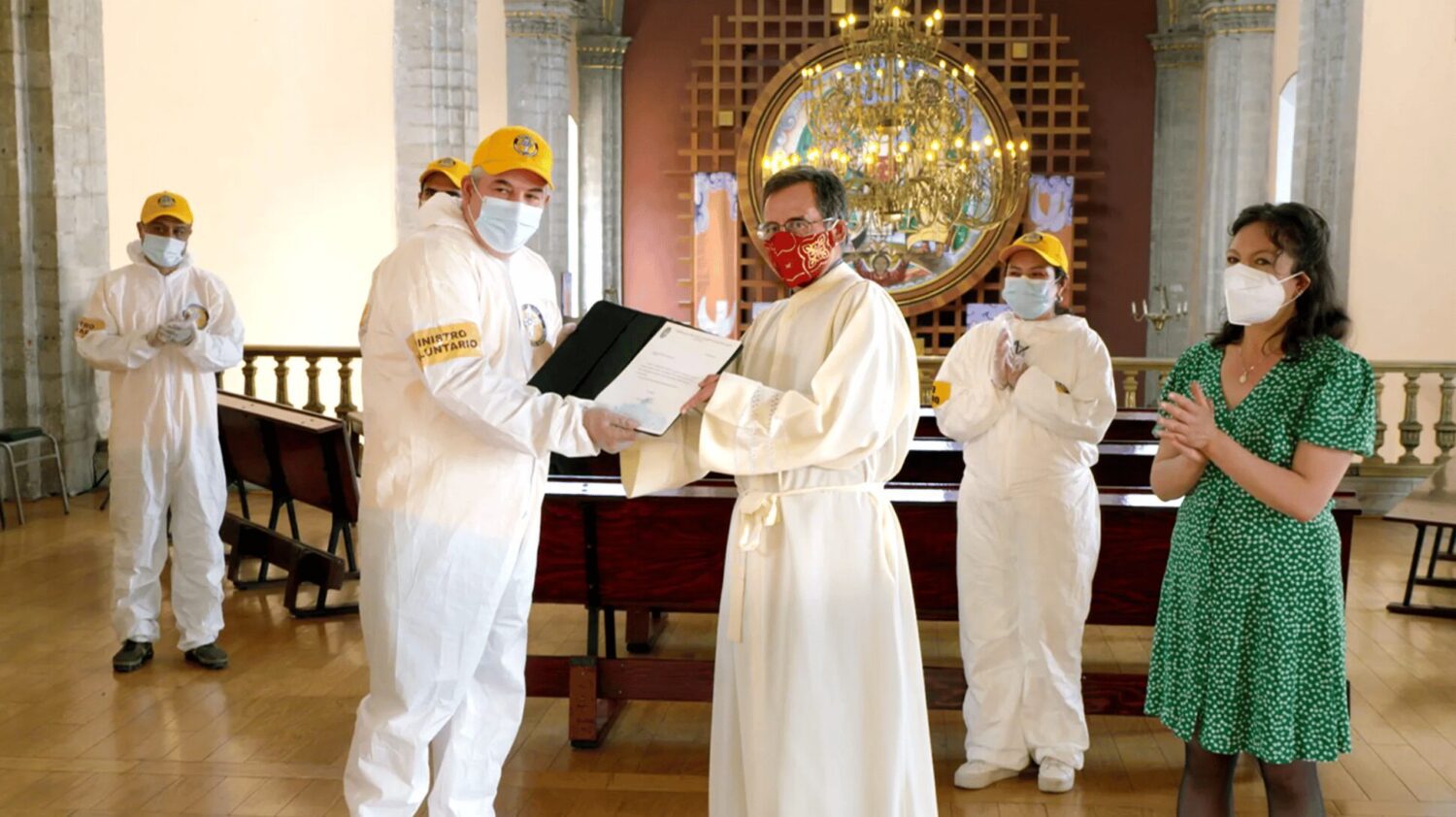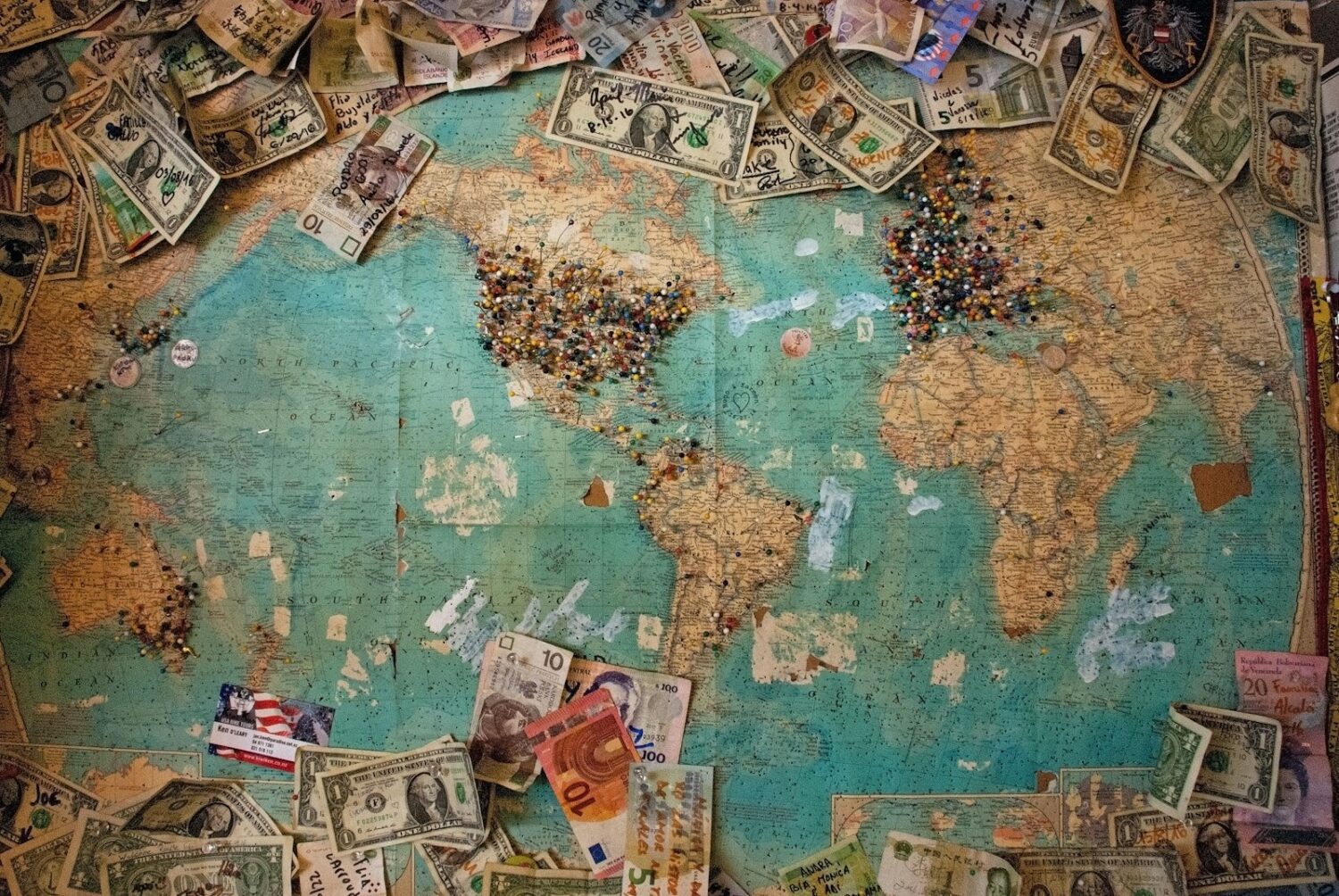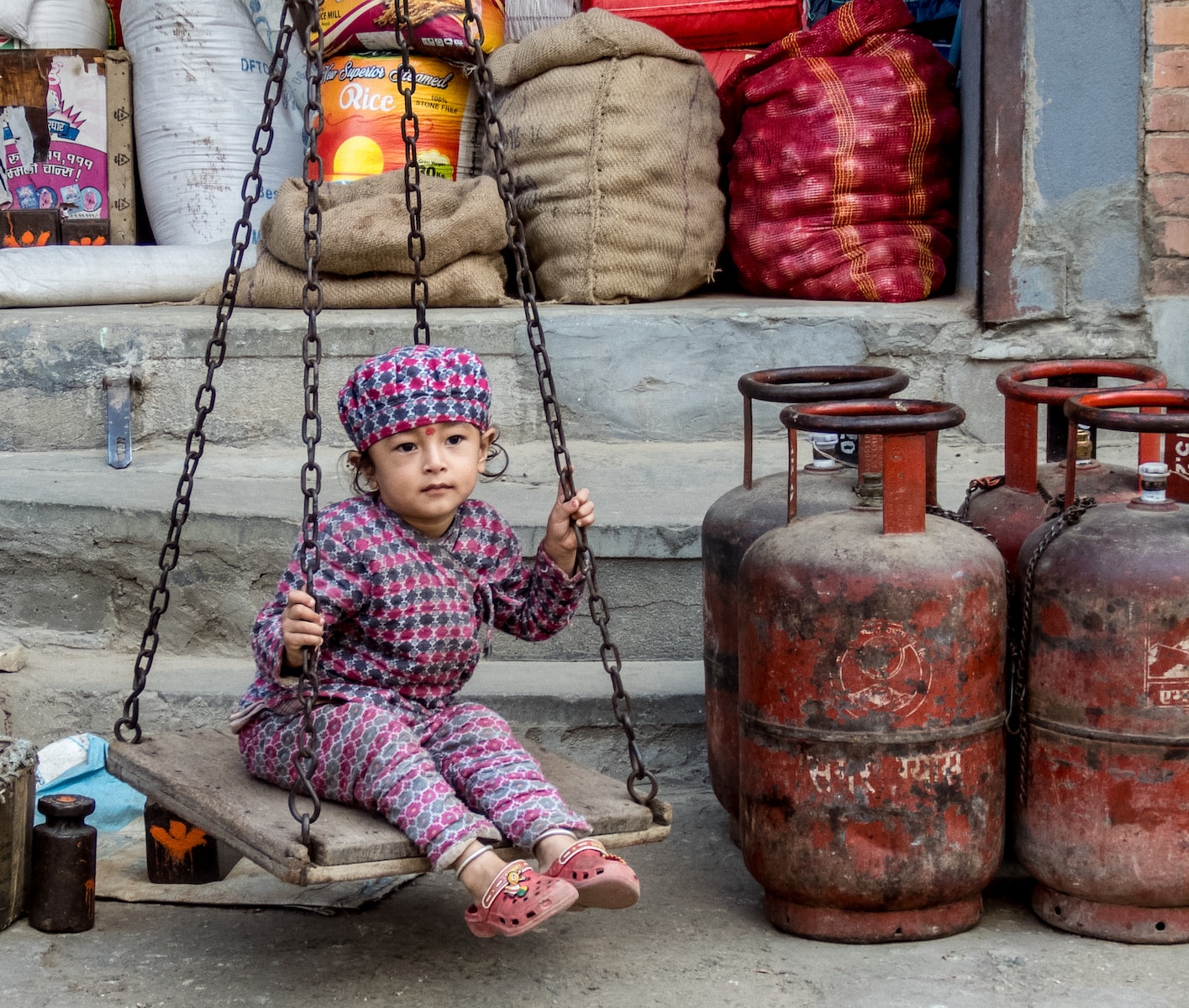Knowledge Economy – The transition from an industrial, resource-based model of economic development to a creative model, driven by knowledge, skills, human creativity and institutions capable of transforming them into economic values, has proved a difficult task for many countries. The new millennium has become a real testing ground for the concepts of such transformation. Human capital, a key resource in those countries that have successfully made the transition, has survived the COVID-19 pandemic. Will it survive a new crash test when the global economy plunges into crisis and creative and rent-oriented value systems collide against the backdrop of the war in Ukraine? Endre Birich describes possible scenarios.
National economies began to shift to innovation since the 1950s, but only in the early 2000s did the transition have taken place de facto in many countries. One of the defining indicators of this transformation is the volume of intangible assets, which predominantly consists of intellectual rights. After all, it is thanks to intellectual rights that the results of creative labor can be used for entrepreneurial activity.
The transition to a new type of economic asset – people’s knowledge, skills, and creative talent – is taking place everywhere. In established, traditional industries, the structure of surplus value is also changing – industries are becoming more creative. Thus, according to the WIPO report “Intangible Capital in Global Value Chains,” the contribution to the added value of a product is mainly due to intellectual property. That is, for example, the cost of a cup of coffee is least contributed to by the labor of plantation farmers and most contributed to by know-how, patents, brands, design, marketing solutions, all things related to intangible assets. Income associated with intangible capital in 19 manufacturing industries increased by 75% between 2000 and 2014 The profit of the most developed economies from the use of intangible assets exceeded the profit from the exploitation of traditional assets – knowledge, facilities, production equipment and materials.
The countries that succeeded in using human capital in their economies became leaders, ensuring high living standards and long-term influence in the world market. The path to this new model was different: for Great Britain, Germany and the United States it took 30-50 years, while for South Korea it took only 10-15 years.
Our study of approaches to the transformation of the economy in more than 10 successful countries, conducted in 2019 – 2020, allowed us to identify a common system of tools and determine when and which of them and in what combination led to positive change. The results of the study helped to develop a methodology, to a certain extent an algorithm, of transformation of economic systems and the transition from an industrial-raw economy to a creative economy based on the development and involvement of human capital in productive activities. The approach was called – The Methodology of Pole Kinetics”.
The study showed several important patterns common to all countries. First, the success of the transition to a creative economy (knowledge economy, digital economy, post-industrial society, etc.) depends on how precisely each state managed to select public policy instruments and launch workable institutions. The selection is based on an assessment of the consistency of public policy instruments with the underlying values of society.
Regardless of the form – tax breaks, grants, venture capital, political or economic programs, infrastructure – they must be accepted by society. Otherwise, they will lead to verbiage and bring no real progress. Economists and marketers must make it a priority to match people’s expectations, cultural code, and values.
Human values in a particular society determine the limits and permissible limits of communication between those in power and ordinary people. Some societies sacralize power, others perceive the state as a service. Some make long-term plans, others live in the here and now, some are pluralistic, others monolithic. If power does not act in accordance with basic values, the creative economy will not take off, institutions will function without real effect, and the talents and abilities of citizens will remain unclaimed.
Exports of creative goods and services are seen as an important indicator of the maturity of the knowledge economy. According to UNCTAD’s Creative Economy Outlook 2022, global exports of creative goods increased from $419 billion to $524 billion from 2010 to 2020, and exports of creative services rose from $487 billion to $1.1 trillion. The difference in absolute numbers and the rate of change is largely due to the growth of the software market and digitalization, where goods turn into services, such as streaming audio and video.
The largest exporters of creative services in 2020 are the United States ($206 billion), Ireland ($174 billion), Germany ($75 billion) and China ($59 billion).
Some countries have tried but failed to form a target model of economic development. A striking example of such a situation is Russia. A set of public policy instruments, including the government’s “Strategy 2020”, seemingly demonstrates everything that has been accumulated by the global community, but does not correlate in any way with the values of Russian society itself.
IP is the most important tool for building a creative economy and engaging human capital in the productive sectors of the economy. Innovation and creativity flourish only where the rights to the creative product are securely protected by law and customary business practices. It is IP that enables ideas, images and narratives to drive economic growth. WIPO’s annual Global Innovation Index clearly demonstrates that leading countries are at the forefront of patenting, focusing on copyright and use advanced digital tools for IP management.
The rise of the intellectual property institution has also led to a global change – in the measurement of economic success through GDP dynamics, based on the system of national accounts. Industries that used to be accounted for as necessary “transaction costs,” that is, taking away value for the sake of the common good, such as new knowledge or research, have been relegated to the category of “producing” value. Today emerging and transition economies, without redesigning their structure, have almost no chance of catching up with the leaders and fitting fairly into value chains.
The COVID-19 pandemic was a serious test for the creative economy. The lockdown imposed in most countries paralyzed entire industries, dramatically reducing communications. Closed borders have challenged the global character of today’s international community. Theaters, concert halls, contemporary art biennales, creative clusters, and many other cultural hotbeds of the knowledge economy have come under pressure. But unprecedented measures of support from governments seeking to preserve cultural environments, the self-organization of creative communities, and the reorientation toward digital channels of communication have enabled human capital to survive and made markets for IP-based “creative” products sustainable. Moreover, the pandemic has played the role of a street traffic supervisor – triggering an explosive growth of digitalization. Technologies related to remote work, cloud services, video and music streaming, online education, delivery, and so on have gained unprecedented speed. According to Gartner, the global IT market will grow 9.5 percent in 2021.
It may seem that humanity has recovered. But… the world immediately faced a new deep man-made crisis related to the economic consequences of Russian aggression in Ukraine, which we have yet to assess and understand. Fuel and food blackmail, the clash between “material” and “creative” value systems amid the warfare in Europe for the second time this decade have raised doubts about the West’s ability to keep human capital, the goals and ideals of post-industrial society and the creative economy at the center of economic policy. Economic leaders are now focused not so much on innovation as on finding new energy suppliers and ensuring the survival of the energy and machine-building sectors. For one-third of the world’s population, the issue of food security has become more acute than ever.
The situation is most dramatic for Germany, whose industrial strength depended heavily on traditional logistics and Russian natural resources. The world’s second-largest steel producer, ArcelorMittal, closed two plants in Bremen and Hamburg. Slovakia closed its largest aluminum smelter, Slovalco. In Lithuania, nitrogen fertilizer maker Achema suspended operations. Governments are using cash injections to stem the effects of the energy crisis, which has affected the creative industries. Germany has already allocated 350 billion euros to compensate for rising electricity rates. However, according to The Wall Street Journal, high gas prices will continue until 2024. Experts doubt that the European industry will be able to recover from the shock any time soon.
It may seem inappropriate to talk about human capital at a time when the material basis of the continents’ social and economic prosperity is under threat. Skeptics predict a throwback to “good old” Europe, with large conscript armies, closed borders, national currencies, and the priority of industrial production and agriculture. In fact, however, we are witnessing a process that inspires the creative class.
In a matter of months, the EU has managed to reorient its economy toward new energy suppliers and has given a real impetus to alternative energy projects. The crisis has given unprecedented boost to eco-generation and green energy projects, which are an integral part of the knowledge economy and a strategy based on human capital. Creativity plus new energy seems to be the new formula for economic prosperity.
The creative segment of the European economy continues to grow. In 2022, Switzerland ranked first in WIPO’s annual Global Innovation Index, surpassing the United States, which has held that position for the past 12 years. Sweden, Great Britain and the Netherlands are among the most successful countries here. Startups are attracting investments, and governments are launching special national programs in film, media, design, theater, contemporary visual arts and tourism.
The European creative economy has been so sustainable thanks to the right choice of policies to support human capital that are consistent with national identity and its underlying values. The European example is further proof that human capital must be defined not only as skills, knowledge and abilities, but also as a network of institutions that help turn them into economic values. Otherwise, it will not turn into capital, but will remain just an informal community of talented people. All successful countries that have changed the structure of their economies have improved their institutions, such as IP and its protection system, the creation of a financial system capable of dealing with intangible assets, and a fiscal system adapted to the specific needs of the creative economy.
We can now safely conclude that both global crash tests had a surprisingly creative effect. The first one gave a strong impetus to the rise of digital technologies and services and tools to bring digital content to market. This opened up a host of new opportunities for increased communications, and it is the intensity of these that will serve as a catalyst for further growth. The second has caused large-scale migration, the outflow of human capital to the territories that are safest for it, and the mixing of communities with different sets of values. Economies that had not previously thought about creative industries, due to the scarcity of people with the right level of skills and the modest size of the market, began to create the infrastructure for innovation and attracting new talent. Moreover, their institutions are already competing. Kyrgyzstan is creating a Creative Industries Park, and Kazakhstan is home to the Astana International Financial Center, whose court is based on English common law. Georgia is preparing to launch a global creative center. Dubai, once associated primarily with oil production, has opened the Al Quoz Creative Zone. The Buenos Aires municipal government is redeveloping some depressed areas of the city by introducing a certain creative industry: some areas become home to designers, others host film and music professionals or technological entrepreneurs. Once countries create institutions, they have a legitimate expectation that these institutions will create a critical mass of talent and resources to launch a creative economy at home.
But will the “replanted trees,” i.e., teams, products, IP, be able to take root in the new environment? What impact will these flows have on society’s values? Will policymakers be able to study these changes and offer appropriate tools to stimulate the transition to a creative economy? In the past the answers to these questions were sought intuitively or empirically, but today we have modern methods, in particular the Pole Kinetics Methodology, and can shape growth strategies based on scientific evidence. After all, it is the answers to these questions that determine the success of both emerging and advanced economies.
The Author
Endre Birich, CEO Kettari Foundation. The Kettari Foundation is a new generation of venture investment with a focus on creators and creative industries. Recently, Kettari has enjoyed huge success in its support of young creators, particularly those ‘digital nomads’ that have been displaced by the war in Ukraine.














